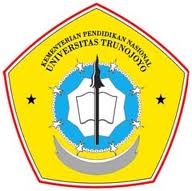Anda belum Log-in!
Silahkan Log in
Selamat Datang di Portal Digital Content Publisher
Sabtu , 25 October 2025
Perpustakaan sebagai jantung pendidikan tinggi di Indonesia, harus mampu memberi kontribusi yang berarti bagi pelaksanaan proses belajar mengajar di perguruan tinggi.
di-posting oleh 060411100773 pada 2013-08-20 19:08:22 • 1243 klik
Simulasi lampu lalu lintas pada sebuah Persimpangan jalan dengan memanfaatkan Citra cctv menggunakan Gabor filter dan Fuzzy logic
Simulation of traffic lights on crossroads with utilizing cctv images using Gabor filters and fuzzy logic
disusun oleh AHMAD AFWAN ARIN
| Subyek: | Simulasi Lampu Lalu Lintas Gabor Filter Fuzzy Pemograman |
| Kata Kunci: | Gabor Filter fuzzy mandani |
[ Anotasi Abstrak ]
Kemacetan lalu lintas merupakan masalah yang hampir terjadi diseluruh negara. Muncul masalah baru dalam penentuan lama nyala lampu lalu lintas. CCTV merupakan peralatan monitoring yang cukup popular akhir-akhir ini. Akan tetapi, kegunaan CCTV sebatas monitoring secara manual. Tidak ada proses otomatisasi pengaturan lalu lintas berdasarkan gambar yang dihasilkan CCTV. Dibutuhkan sistem yang memanfaatkan gambar yang diambil menggunakan CCTV pada persimpangan jalan untuk mengatur lalu lintas. Dalam proses pengenalan obyek pada citra CCTV terdapat 2 tahap utama dalam simulasi lalu lintas, yaitu identifikasi keadaan jalan dengan metode gabor filter untuk mengetahui kepadatan jalan dilanjutkan dengan penentuan cycle time menggunakan Metode Mamdani dengan variabel fuzzy keadaan jalan, waktu, dan hari. Pada uji coba skenario 1 dengan variabel waktu pukul 06.00, variabel hari senin, dan variabel keadaan jalan 400. Dengan dengan cycle time pendek [0-15] menghasilkan nyala lampu 10 detik. Artinya tingkat keramaian pada mencapai 66,7%. Pada uji coba skenario 2 menggunakan variabel waktu pukul 09.41.45, variabel hari selasa, dan variabel keadaan jalan 488. Dengan cycle time pendek [0-15] menghasilkan nyala lampu 11 detik. Artinya tingkat keramaian mencapai 73,3%.
Deskripsi Lain
Traffic congestion is a problem that occurs almost throughout the country. New problems arise in the determination of long traffic lights. CCTV monitoring equipment which is quite popular these days. However, the extent of usefulness of CCTV monitoring manually. There is no traffic control automation process images produced by CCTV. It takes a system that utilizes images captured using CCTV at the intersection to regulate traffic. In the process of object recognition in the CCTV image, there are 2 major stages in the simulation of traffic, namely the identification of the state with Gabor filter method to determine the density of the road followed by the determination of the cycle time using the method of Mamdani fuzzy variable road conditions, time, and day. In the test scenario 1 with variable time at 06.00, Monday variables, and the variable state of the road 400. With the short cycle time [0-15] generating lights 10 seconds. Meaning rate reached 66.7% at the crowd. In the second test scenario using a variable time at 09:41:45, Tuesday variables, and variable road conditions 488. With a short cycle time [0-15] generating lights 11 seconds. It means that the level of the crowd reached 73.3%.
| Kontributor | : Dr. Indah Agustien S, S.Kom, M.Kom.;Bain Khusnul Khotimah,ST,.M.Kom |
| Tanggal tercipta | : 2013-07-23 |
| Jenis(Tipe) | : Text |
| Bentuk(Format) | |
| Bahasa | : Indonesia |
| Pengenal(Identifier) | : TRUNOJOYO-Tugas Akhir-4657 |
| No Koleksi | : 060411100773 |
Ketentuan (Rights) :
23-juli-2013
 Download File Penyerta (khusus anggota terdaftar)
Download File Penyerta (khusus anggota terdaftar) 1. TRUNOJOYO-Tugas Akhir-4657-060411100773_Abstract_TOC.pdf - 177 KB
1. TRUNOJOYO-Tugas Akhir-4657-060411100773_Abstract_TOC.pdf - 177 KB 2. TRUNOJOYO-Tugas Akhir-4657-060411100773_Cover.pdf - 237 KB
2. TRUNOJOYO-Tugas Akhir-4657-060411100773_Cover.pdf - 237 KB 3. TRUNOJOYO-Tugas Akhir-4657-060411100773_Chapter1.pdf - 153 KB
3. TRUNOJOYO-Tugas Akhir-4657-060411100773_Chapter1.pdf - 153 KB 4. TRUNOJOYO-Tugas Akhir-4657-060411100773_Chapter2.pdf - 316 KB
4. TRUNOJOYO-Tugas Akhir-4657-060411100773_Chapter2.pdf - 316 KB 5. TRUNOJOYO-Tugas Akhir-4657-060411100773_Chapter3.pdf - 300 KB
5. TRUNOJOYO-Tugas Akhir-4657-060411100773_Chapter3.pdf - 300 KB 6. TRUNOJOYO-Tugas Akhir-4657-060411100773_Chapter4.pdf - 952 KB
6. TRUNOJOYO-Tugas Akhir-4657-060411100773_Chapter4.pdf - 952 KB 7. TRUNOJOYO-Tugas Akhir-4657-060411100773_Conclusion.pdf - 87 KB
7. TRUNOJOYO-Tugas Akhir-4657-060411100773_Conclusion.pdf - 87 KB 8. TRUNOJOYO-Tugas Akhir-4657-060411100773_References.pdf - 100 KB
8. TRUNOJOYO-Tugas Akhir-4657-060411100773_References.pdf - 100 KB 9. TRUNOJOYO-Tugas Akhir-4657-060411100773_Appendices.pdf - 319 KB
9. TRUNOJOYO-Tugas Akhir-4657-060411100773_Appendices.pdf - 319 KB Dokumen sejenis...
Dokumen sejenis...Tidak ada !
 Dokumen yang bertautan...
Dokumen yang bertautan... Kembali ke Daftar
Kembali ke Daftar 